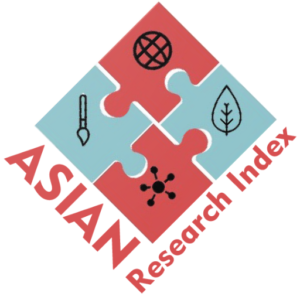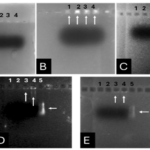Types of Manuscripts
1-Manuscripts subject to editorial review in addition to external appraisal:
- Research Articles: (3000 – 6000 words including references and excluding appendices), expected to provide a significant leap and new ideas.
- Review Articles: (3000 – 4000 words including references and excluding appendices), written by well-known authors in specialized fields, reviewing relevant literature, summarizing its results and adding sober opinion.
2- Manuscripts that are only subject to editorial review:
the editorial board will contact experts who previously contributed to the relevant fields.
– Analyses; include:
- News: (max 250 words for each news) that deals with and highlights the most important development in science, technology and innovation within the previous few months prior to publication.
- Commentary: (max 450 words) is a review and opinion on important research articles, within two years of the publication date of these articles. The comment should add a scientific or translational aspect to the research, not just a summary of the experiences mentioned in the paper.
- Opinions & Perspectives: (max 1000 words) the authors present their opinions or perspectives on the future of science, in addition to approaching scientific, social, economic, cultural issues and technological challenges using the scientific methodology that depends on relevant indicators.
Note: As long as it will express personal opinions, the number of authors should not exceed two authors.
- Book review: (about 1000 words) it is a comment on a newly published scientific book that contains important scientific information for readers or introduces new ideas.
- Patents: (about 800 words) it highlights a recent patent related to a new idea that is investable, serves society or has practical values, and high economic feasibility.
Content of the Research Article:
Basic information: Title, authors, abstract, keywords.
- Title: The title of the manuscript should be brief, specific and relevant to the research topic.
- Authors: The name of the authors must be mentioned with the entity he/she belongs to, e-mail, and phone numbers.
- Abstract: (approximately 250 words) It should be in the form of one paragraph without a title, according to the following criteria:
- – It includes the issue discussed by the research and the objective of the study
- – It includes a brief description of the used methods
- – The abstract should be an objective re-presentation of the article, and should not contain any findings not mentioned in the main text.
- – It includes a brief summary of the findings.
- – It includes an explanation of the results and conclusions.
- Keywords: 3 to 10 keywords to be added after the abstract, they must be specific to the article and common in the research topic.
Sections of the research article: introduction, materials and methods, results, discussion, conclusions and recommendations.
- Introduction: It should contain an introduction to the study and explain its importance. It should specify the objective of the study and the specific hypothesis being tested. It must be understandable to researchers in other fields.
- Materials and Methods: These should be detailed so that other researchers can repeat the study and build on it. New methods and protocols used should be detailed, but known methods can be briefly mentioned.
- Results: The author should provide an accurate and concise description of the experimental results. Any supplementary materials related to the research study (graphs, tables, videos…) must be provided with the manuscript and mentioned in the main text and will be accessible only via the journal website.
Note: For manuscript data and supplementary materials: The publication of the manuscript includes a pledge that all materials and data related to it will be available to readers, and any restrictions that limit access to these materials or information must be disclosed.
- Discussion: The author should discuss the results and how they can be interpreted in light of previous studies and the hypothesis used. He should also mention the results and their applications, and mention the future studies that could be carried out.
- Conclusions and recommendations: can be added at the end of the discussion if they are not long and complex, or kept separate.
- Acknowledgments: Thanks and appreciation for any support received by the author of the research, whether technical, administrative…etc.
- References: Authors should write references as numbers only, they should use the Vancouver system. References must be mentioned in the order they appear in the paper (including tables, pictures, and graphs).
- Patent: It is non-mandatory, and it can be added if there is a patent resulting from this study.
- Abbreviations: Abbreviations must be defined the first time they appear in the summary, main text, tables or graphs, and the definition must be written after the abbreviation is placed in parentheses.
- Materials attached to the research article: Include: 1- Acknowledgments that there is no conflict of interest. 2- Author Contributions.
Content of the Review Article:
Basic information: title, authors, abstract, keywords.
- Title: The title of the manuscript should be brief, specific and relevant to the research topic.
- Authors: The name of the author/s must be mentioned with the entity he belongs to, e-mail and phone numbers.
- Abstract: It should be (approximately 200 words), in the form of one paragraph without a title, and provide a brief breakdown of the article to show the reader how the article can help him in his research and form a general picture of the relevant topic. 3 to 10 keywords have to be added after the abstract, they must be specific to the article and common in the research topic.
Sections of the review article: introduction, classified paragraphs closely related to the subject of the review, conclusions, future visions (optional)
- Introduction: It should contain an introduction in which the author clarifies the importance of the topic and the scientific or research problem.
- Classified paragraphs: They follow a classification set by the author himself and are appropriate to the topic.
- Conclusions (mandatory): in which the author shows the summary of his review of the literature included in the review article, highlighting his sober opinion about it and what are the hypotheses that explain the results he touched on in the numerous research articles reviewed.
- Future visions (optional): in which the author states his vision for the development of the scientific field under review and future directions for that.
- Acknowledgments: Thanks and appreciation for any support received by the author of the research, whether technical, administrative or others.
- References: Authors should write references as numbers only, they should use the Vancouver system. References must be mentioned in the order they appear in the paper (including tables, pictures, and graphs).
- Abbreviations: Abbreviations must be defined the first time they appear in the summary, main text, tables or graphs, and the definition must be written after the abbreviation is placed in parentheses.
- Example of Review Article
About The Journal
Journal:![]() Syrian Journal for Science and Innovation
Syrian Journal for Science and Innovation
Abbreviation: SJSI
Publisher: Higher Commission for Scientific Research
Address of Publisher: Syria – Damascus – Seven Square
ISSN – Online: 2959-8591
Publishing Frequency: Quartal
Launched Year: 2023
This journal is licensed under a: Creative Commons Attribution 4.0 International License.





